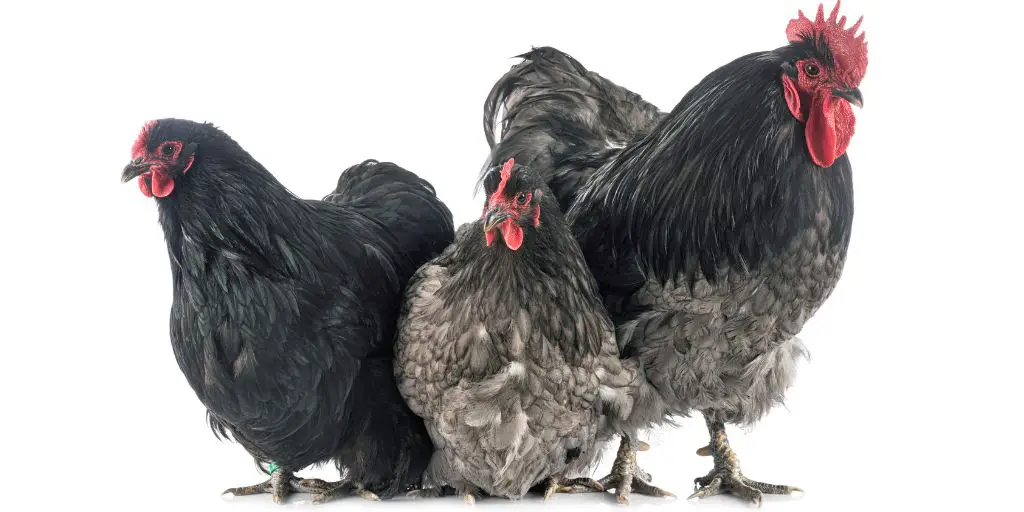Here you will know all about Orpington chicken. Their history, color varieties, size, temperament, appearance, egg production, picture and more.
Opinions on the best chicken breed can be quite passionate – these birds are potential egg-layers and backyard pets! One of the most popular breeds is the Orpington.
Bred in England in the late 1800s, this chicken is known for being good-natured and relatively easy to tame. They are lovely, cute chicken breeds.
While there are many varieties of Orpingtons, they all share some key characteristics: large bodies with long, broad feathers that make them look almost round.
If you’re considering adding chickens to your home, read on for everything you need to know about Orpingtons!
History and origin of Orpington chickens
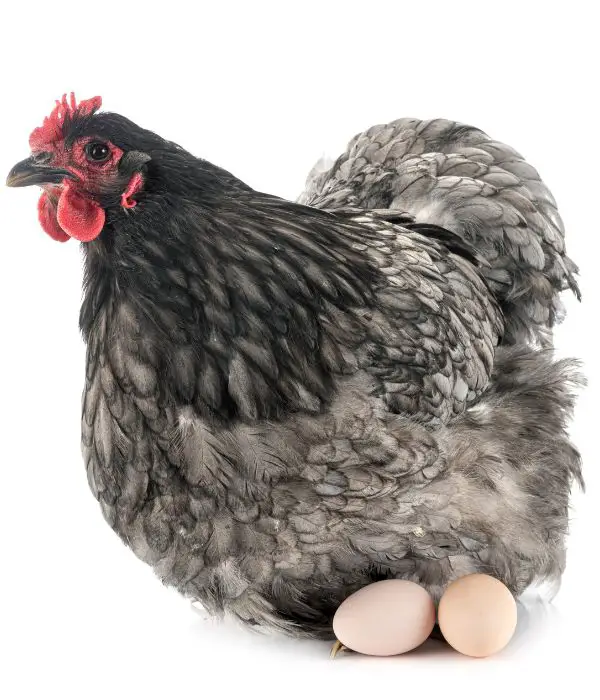
Orpington chickens are a breed of domesticated chicken that originated in England in the late 19th century.
They were developed by a breeder named William Cook of Orpington, Kent, and were first shown at a poultry show in London in 1886.
The breed was created by crossing several breeds, including the Plymouth Rock, Langshan, and Minorca, to create a heavy-bodied bird that was excellent at egg-laying and meat production.
The Orpington was well-received by farmers and poultry keepers and became popular quickly.
In the early 20th century, Orpingtons were exported to the United States and other countries, where they were further developed and refined.
Today, Orpingtons are one of the world’s most popular breeds of chickens kept for their meat, eggs, and as pets.
In the United States, Orpingtons are recognized by the American Poultry Association in four different colors: black, blue, buff, and white. Each color has its standard and is judged separately in poultry shows.
Orpington’s chickens have a rich history and origin, having been developed in England for dual purposes of egg laying and meat production.
They have since spread and become popular worldwide, recognized in various colors by the American Poultry Association. The breed is also rare in other countries in Europe and Australia.
What are the Orpington chicken recognized color varieties?
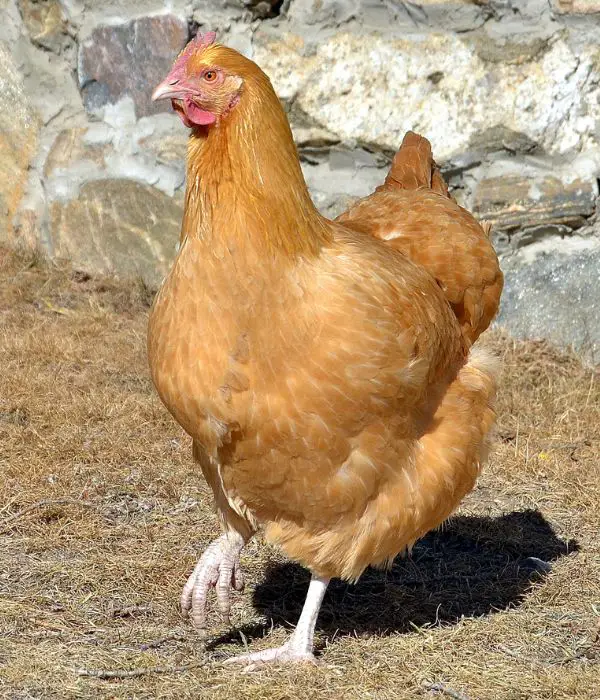
There are several color varieties of Orpington chickens.
The American Poultry Association recognizes some of the more popular colors of Buff Orpington. But some are still works in progress and more work needs to be done to get pure breed.
Buff: The Buff Orpington is the most popular variety of Orpington. Despite a period of dwindling popularity, the Buff Orpingtons quickly outpaced the Black Orpington for popularity. It has now found favor with many backyard poultry enthusiasts.
White: Godfrey Shaw first made White Orpingtons. Initially, they were known as Albions, but their name was later changed to White Orpingtons. White Orpingtons are quite popular today, and much poultry farmers raise them as a source of food and breeding.
Black: The Black Orpington was first created, Orpington chicken. They were first introduced in the 1880s and were very popular.
Cuckoo: Elizabeth Jane (William Cook’s daughter) created this Orpington color variety. Interest in this breed died out after the First World War.
Blue: The Blue Orpington was first introduced in 1910. Even though this color was not very successful in early days, it is now very successful and can be bought for a good price.
Spangled: Spangled Orpingtons first came to the United States in 1900, and they are still a very rare variety today.
Red: W. Holmes Hunt invented the red variety of Orpington chicken, but it has never been very popular.
Diamond Jubilee: In honor of Queen Victoria’s fiftieth year on the throne of Great Britain, the Diamond Jubilee plumage was created. The patterning looks like a mille fleur, and they are still a popular variety in their homeland.
Partridge: They have a well-defined brown partridge pattern, which is not approved by the APA.
Chocolate: The Chocolate Orpington is a new member of the Orpington family and is very rare.
Lavender: Another rare bird in the family is the Lavender Orpington. They are expensive in the current markets because their demand is higher than their supply.
Lemon Cuckoo: There are only a few Lemon Cuckoo Orpingtons in the US which are new generation varieties of Orpington.
Gold Laced: The Gold Laced Orpington is rare here in the US, but they have a much bigger following in Europe.
Silver Laced: Silver Laced Orpingtons are beautiful birds and are becoming very popular.
Ermine Orpington: On the other hand, the Ermine Orpington was the same color pattern as the Columbian.
Orpington chicken lifespan
The lifespan of an Orpington Chicken can vary depending on the environment and care they receive. However, it is generally accepted that a healthy Orpington can live up to 8–10 years. They can even reach up to 12 years of age with proper care!
Orpington chicken temperament
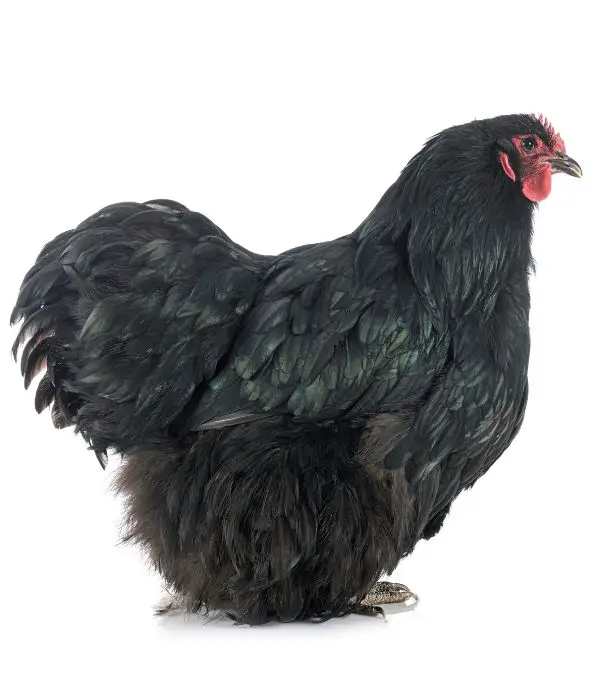
Orpingtons are well-known for their docile and friendly temperament. They tend to be quite gentle, making them a popular choice for pet chickens.
Orpingtons are also relatively easy to tame and make great family pets, especially for children who enjoy spending time with animals. This breed of chicken also gets along with other animals, making them great for homesteading.
Orpingtons are an excellent breed of chicken due to their good-natured temperament, dual-purpose production capabilities, and ability to thrive in the backyard and commercial environments.
Orpington chicken hen eggs laying age, count, egg size, and egg color
Orpington hens typically reach their peak laying age around 18 months, but can start laying eggs as early as 4–5 months. The average laying count for an Orpington is around 200-280 large, brown eggs per year.
The egg size of a healthy Orpington hen is typically considered significant, with a weight of around 56 to 61 grams. The egg color can range from light brown to dark chocolate color.
Color, size, appearance, characteristics of Orpington chicken
Color
There are four standard colors of Orpington chickens recognized by the American Poultry Association: black, blue, buff, and white.
Other available but unstandardized colors include chocolate, Jubilee, spangle, silver laced, splash, gold-laced, and Partridge.
Size
Orpingtons are a large breed of chicken and are considered massive. They typically weigh around 6–10 pounds, with hens slightly smaller than roosters.
The females weigh about 6–8 pounds, and the males about 8 -10 pounds, depending on age and feeding habits.
Appearance
Orpingtons have a round, broad body shape with dense, soft feathers that look almost round. Short, strong legs support their bodies.
- Beak: Their beak is yellow or horn-colored, depending on the breed.
- Eyes: Their eyes are usually orange or red, depending on the breed.
- Comb: The comb of an Orpington is bright red and stands erect with defined points.
- Wattles: The wattles feature two long and bright red wattles with rounded lower edges.
- Feathers: Their feathers are broad and dense, making them look almost round.
- Legs: They have short, featherless, solid legs. Very clean and pinkish.
- Earlobes: Their earlobes are usually smooth, light, or reddish. They look oblong.
Characteristics
Orpingtons are known for their gentle, docile demeanor and friendliness. They are relatively calm and quiet birds and can be tamed quite easily.
They are also very hardy birds, making them perfect for family pets or commercial environments. Orpingtons are known for their egg-laying capabilities and make excellent dual-purpose chickens.
They are also very good at foraging and make extraordinary free-range chickens. Lastly, they have a high resistance to diseases and parasites, which makes them even more attractive as a poultry option.
Orpington hen Vs. rooster
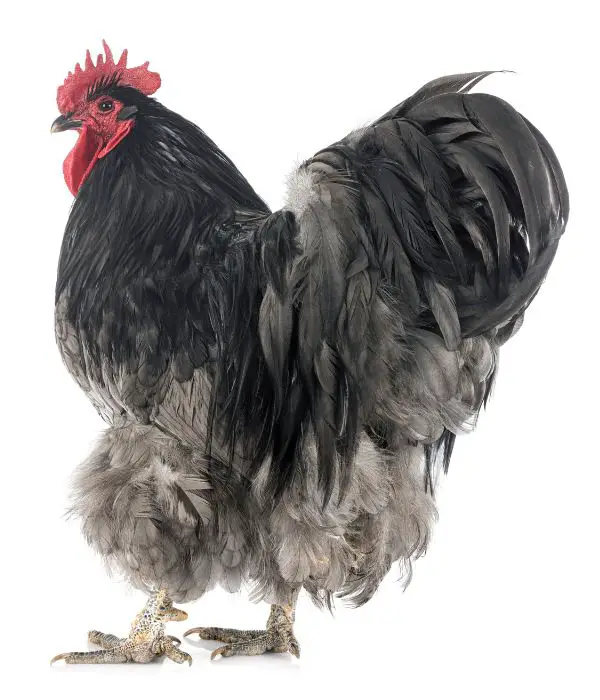
When comparing Orpington Hen Vs. Rooster, there are some key differences you need to look at.
Orpington Hens have a soft, calm temperament, making them great family pets. You will notice that Orpington hens are quieter and more content to relax and eat than Orpington roosters.
– On the other hand, Orpington roosters are much more active and alert. Orpington roosters are also known to be quite vocal, so you will often hear them crowing throughout the day.
– Orpington hens are also excellent layers and can lay up to 200 eggs annually. They make excellent mothers as well. Orpington roosters are generally more aggressive and territorial than Orpington hens, but also protect the flock.
– The hens are mostly smaller than Orpington roosters, and Orpington hens typically weigh around 6–8 pounds, while Orpington roosters can reach up to 10 pounds.
– Orpington Hens have a soft, feathery black or blue appearance, while Roosters are more vibrant with a striking red comb and colorful plumage.
– When it comes to the life span, hens mainly live longer, up to 8–10 years, while Roosters tend to have a shorter lifespan of 4–5 years. This is because Orpington roosters are usually more active and can become more susceptible to predators.
– Roosters can be aggressive, especially during mating season, while Hens are typically docile. This is something you will note very quickly when rearing Orpington chickens.
Benefits of raising and breeding Orpington chicken
There are many benefits of raising Orpington chickens, such as:
Cold hardy chickens: Orpingtons are very hardy birds and can withstand colder climates, making them excellent for backyard farming. When you compare them with other breeds, Orpingtons are more resistant to illnesses like Marek’s disease.
Good in egg production: Orpington Hens are excellent layers, producing many large brown eggs yearly. This is one of the major reasons Orpingtons are popular with farmers.
Hens are gentle: Orpington hens are gentle, friendly birds, making them great family pets. They are very docile and get along with other Orpington hens and chickens.
Good foragers: Orpingtons are also known for their ability to forage, meaning they can find their food and eat a wide variety of items.
Best for beginners: Orpington chickens are also quite easy to breed, as Orpington hens can go broody and will take excellent care of their chicks.
Beautiful appearance: Orpingtons are also quite showy birds, with striking colors and fluffy feathers. This makes Orpingtons a popular choice for exhibition purposes as well.
Good meat production: Orpingtons are also known for their meat production, with plump and juicy meat that is highly sought after by many consumers.
Problems associated with raising Orpington chickens
There are challenges associated with Orpington chickens, including:
Feed consumption: Orpingtons are heavy birds and consume a lot of feed, which can be a challenge for some farmers or hobbyists trying to keep their costs low.
Broodiness: Orpingtons are known to be broody, meaning they have a strong desire to hatch eggs and care for the chicks. While this can be an advantage for those looking to incubate eggs, it can also be a problem for farmers who want to maximize their egg production.
Limited space: Orpingtons are large birds, requiring more space than other breeds. This can be a challenge for farmers or hobbyists limited in terms of space and resources.
Health concerns: Orpingtons, like all chickens, are susceptible to various health concerns such as mites, lice, respiratory issues, and egg-laying issues. Maintaining proper hygiene and providing adequate care is essential to prevent these issues from arising.
Cost of breeding: Raising and breeding Orpingtons can be an expensive process, especially when it comes to feeding, housing, and health care costs.
Inconsistent production: While Orpingtons are known for their good egg production, it is important to note that egg production can be inconsistent and may fluctuate depending on various factors such as age, weather conditions, and the overall health of the birds.
FAQs
What do Buff Orpington chickens eat?
Buff Orpington chickens, like all chickens, require a balanced diet to maintain their health and overall well-being. A typical diet for Orpingtons may include the following:
Layer feed: A commercial layer feed formulated specifically for egg-laying chickens that provide all the essential nutrients needed for optimal egg production.
Grains: Grains such as corn, wheat, and barley can be fed to provide additional energy and carbohydrates.
Vegetables: Chopped greens and vegetables such as lettuce, carrots, and spinach are great sources of vitamins and minerals.
Protein: Chickens require protein to support muscle development and egg production. Mealworms, crickets, and other insects can be fed as a source of protein.
Water: Fresh, clean water should always be available to ensure proper hydration.
When to butcher Buff Orpington chickens?
You can butcher Orpington chickens when they reach a weight of around 5 pounds. The best time to butcher Orpingtons is at approximately 16–20 weeks of age, when they are at the peak of their meat production.
How big do Orpington chickens get?
Orpington chickens can grow to a size of around 8–12 pounds. They are considered large chickens and have bulky body shapes with thick feathers.
How much do Buff Orpington chickens cost?
The cost of Orpington chickens varies depending on the variety, age, and location. Generally, Orpingtons can range from $2-$15 per chick, with adult Orpingtons typically costing more.
Some Orpington varieties, such as blue or black Orpingtons, maybe in higher demand and cost more than others.
It’s important to research when looking for Orpington chickens to ensure you get the best value for your money.
Where to buy Orpington chickens?
Orpingtons can be purchased from local hatcheries, breeders, feed stores, and online vendors.
You will be able to find Orpington chickens in various colors and varieties on these farms, and learn more about the Orpington breed in general. It is crucial to ensure that you get a healthy Orpington chicken.
Conclusion
Orpingtons are a great breed of chicken for both backyard and commercial environments.
They are the best choice for dual-purpose chickens due to their egg-laying capabilities and for meat production.
You don’t have to worry about your kids as Orpington chickens are friendly, docile, and very easy to tame, so kids can handle them easily.
